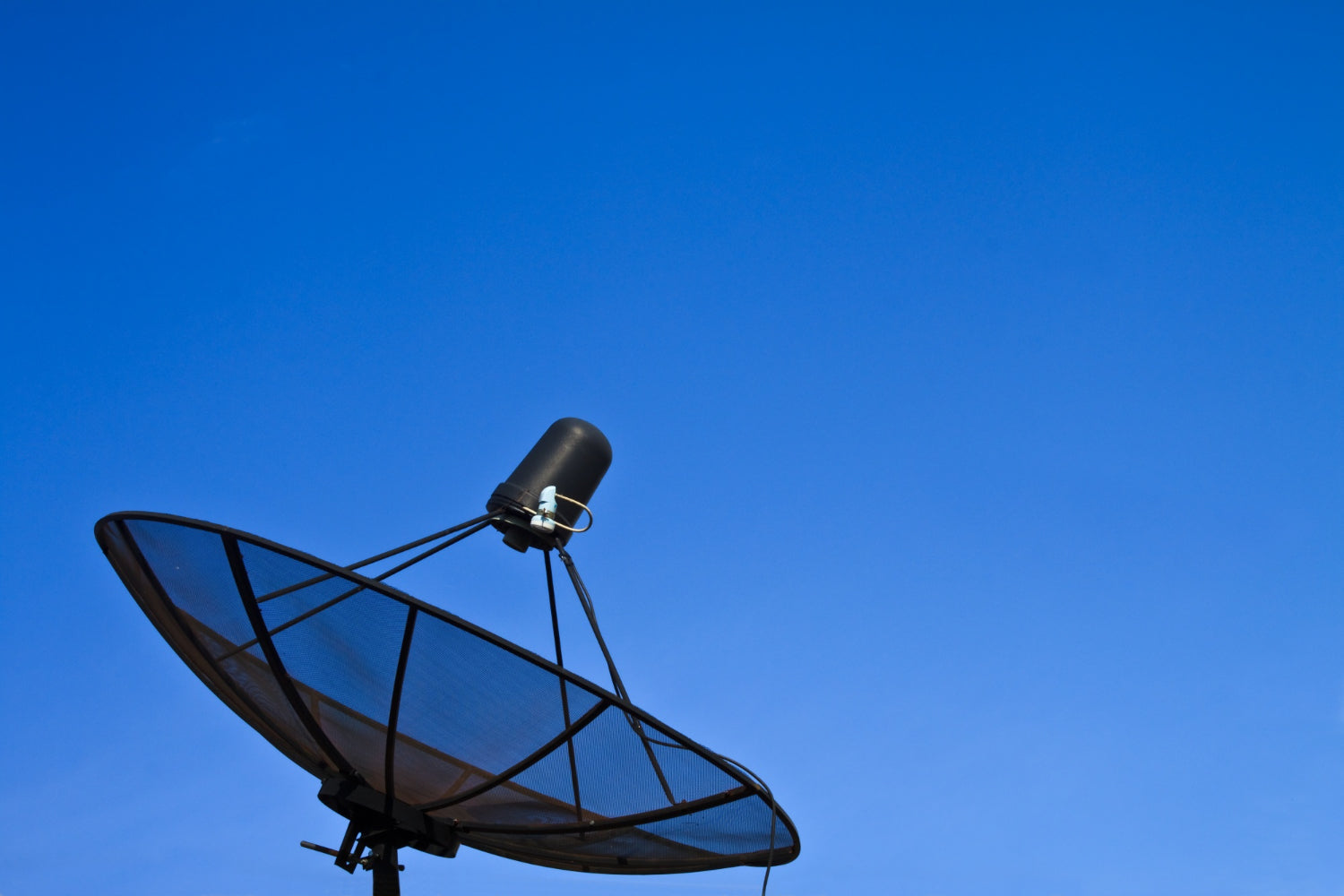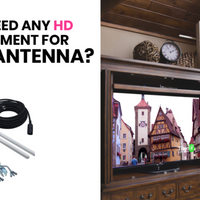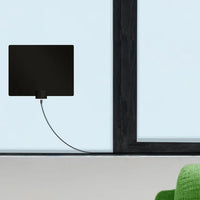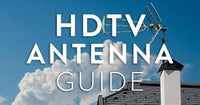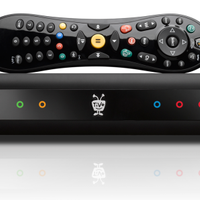Having a reliable TV antenna setup is crucial for enjoying your favorite television programs without interruptions. Whether you are using an indoor or outdoor antenna, maximizing its performance can significantly improve your TV reception. In this guide, we will explore various expert tips to enhance your antenna setup and ensure optimal signal strength.
How To Choose The Best Antenna Location?
-
Choose the right antenna for your location: Before purchasing an antenna, consider your location and the distance from broadcast towers. If you live in a rural area or far from broadcast towers, you may need a more powerful outdoor antenna with a longer range. Conversely, if you live in a urban area with nearby towers, a smaller indoor antenna may suffice.
2. Properly position the antenna: To maximize signal strength, position your antenna near a window or on an exterior wall facing the direction of broadcast towers. Avoid placing the antenna behind furniture or near metal objects, as these can interfere with signal reception. Experiment with different positions to find the best placement for optimal reception.
3. Use a signal amplifier: If you are experiencing weak signal reception, consider using a signal amplifier to boost the strength of the incoming signal. Signal amplifiers are especially helpful for long-range outdoor antennas or for areas with weak signal coverage. Be sure to choose a high-quality amplifier that is compatible with your antenna.
4. Aim for a clear line of sight: For outdoor antennas, it is important to have a clear line of sight between the antenna and broadcast towers. Avoid obstructions such as buildings, trees, or hills that can block the signal. If possible, elevate the antenna on a roof or high pole to improve reception.
5. Adjust the antenna for optimal reception: Once you have positioned the antenna, adjust the direction and angle for the best reception. Many antennas have adjustable elements that allow you to fine-tune the signal strength. Use a compass or online signal locator tool to determine the direction of broadcast towers and adjust the antenna accordingly.
6. Keep your antenna clean and well-maintained: Dust, dirt, and debris can accumulate on the antenna over time, affecting signal reception. Regularly clean the antenna with a soft cloth or brush to remove any buildup. Check for loose connections or damaged cables, and repair or replace any faulty components to maintain optimal performance.
7. Check for interference: Nearby electronic devices, power lines, or other antennas can cause interference and disrupt your TV reception. Move the antenna away from sources of interference or use a signal filter to eliminate unwanted noise. Additionally, avoid using extension cords or splitters that can degrade the signal quality.
By following these expert tips, you can enhance your TV antenna setup and enjoy crystal-clear reception of your favorite TV channels. With a reliable antenna configuration, you can eliminate signal interruptions and ensure a seamless viewing experience.
How to Improve Antenna Reception
When striving to improve your antenna reception, there are several strategies you can implement. To enhance your antenna signal, consider positioning your antenna in a higher location with minimal obstructions such as buildings or trees. This can help reduce interference and boost signal clarity. Additionally, using a TV transmitter booster can amplify weak signals and improve reception quality. Optimizing your antenna's position is also crucial for maximizing reception, so experiment with different orientations to find the best signal. Furthermore, checking for any loose connections or damaged cables can also help improve antenna reception. Make sure all cables are securely connected and in good condition to prevent signal loss. Additionally, upgrading to a high-quality antenna with a longer range can significantly enhance your reception capabilities. Research different antenna models to find one that best suits your needs and location.
 Using a signal meter to fine-tune your antenna's position can also help optimize reception. By monitoring signal strength and quality, you can adjust the antenna's position for optimal performance. Lastly, consider investing in a rotating antenna rotor to easily adjust the direction of your antenna for better reception of distant signals.
Using a signal meter to fine-tune your antenna's position can also help optimize reception. By monitoring signal strength and quality, you can adjust the antenna's position for optimal performance. Lastly, consider investing in a rotating antenna rotor to easily adjust the direction of your antenna for better reception of distant signals.
By implementing these strategies, you can improve your antenna reception and enjoy clearer, sharper TV signals. Experiment with different techniques to find the best solution for your specific location and needs.
Avoiding Interference for Better TV Reception
Signal interference can disrupt your TV reception and result in poor image quality. To combat interference, make sure to place your antenna away from electronic devices that emit signals, such as routers or microwaves. Choosing a flat antenna can help minimize interference as it is designed to capture signals effectively. For enhanced performance, consider investing in an HDTV antenna with superior signal reception capabilities that can deliver crystal-clear images. Additionally, adjusting the position of your antenna can help improve signal reception. Try experimenting with different angles and heights to find the optimal position for the best signal strength. It is also recommended to use a signal amplifier or a signal booster to strengthen weak signals and improve overall reception.
Regularly checking and adjusting your antenna orientation is important, as environmental factors such as weather conditions and nearby structures can also affect signal reception. By taking these precautions and investing in the right equipment, you can enjoy uninterrupted TV viewing with excellent picture quality.
Positioning Your Antenna for Best Reception
Deciding between a roof-mounted and indoor antenna setup depends on your location and space considerations. Roof antennas generally offer better reception due to their elevated position, while indoor antennas are more discreet. When positioning your antenna, aim it towards the broadcast towers to receive optimal signal strength. Using an external antenna amplifier can further boost your reception, especially if you are located far from TV stations. Additionally, considering the type of signal you are trying to receive can also impact your decision. If you primarily watch local channels that broadcast in UHF frequencies, a smaller indoor antenna may suffice. However, if you are trying to pick up VHF channels or are located in a more rural area with weaker signals, a roof-mounted antenna may be necessary for optimal performance.
It is also important to take into account any obstructions that may affect your antenna's reception, such as tall buildings, trees, or hills. In some cases, you may need to install a directional antenna to avoid interference from these obstacles.
Ultimately, the best antenna setup for you will depend on a variety of factors unique to your location and viewing preferences. Consider consulting with a professional antenna installer to help determine the most effective solution for your needs.
Utilizing Indoor Antenna for Improved Signal
If you are using an indoor antenna, moving it around your living space can help find the best reception spot. Consider installing an attic-mounted antenna for superior TV reception as the height can improve signal capture. Ensure there is a clear line of sight between your antenna and the broadcast towers for uninterrupted signal transmission. These adjustments can significantly enhance your viewing experience by ensuring a stable and consistent signal. Additionally, always make sure your antenna is properly connected to your television and that all cables are in good condition. Sometimes a simple repositioning of the antenna or tightening of connections can make a big difference in reception quality.
If you are still experiencing issues with reception, consider investing in a signal amplifier or signal booster to help strengthen your antenna's signal. These devices can help improve signal strength and clarity, especially if you live in an area with a weak broadcast signal.
Finally, don't forget to regularly rescan for channels on your television to ensure you are always receiving the most up-to-date programming available in your area. By following these tips and making some adjustments, you can enjoy clear, crisp television reception without any frustrating interruptions.
Troubleshooting Antenna Setup Issues
In case you encounter reception issues with your antenna setup, there are several troubleshooting steps you can take. Using a cable TV signal booster can amplify weak signals and improve reception quality. Check your coax cable connections to ensure they are secure and free of any damage to maintain a strong TV signal. Adjusting rabbit ears on your antenna can also help improve signal clarity, especially if you are receiving signals from multiple directions. Additionally, you can try repositioning your antenna to see if you can find a better signal. Sometimes simply moving it a few inches in a different direction can make a big difference in signal strength. If you are using an indoor antenna, try placing it near a window or on a higher level to improve reception.
If you are still experiencing reception issues, you may want to consider upgrading to a more powerful antenna. Outdoor antennas typically have a longer range and can pick up signals better than indoor antennas. Make sure to consult with a professional if you are unsure about which type of antenna is best for your location.
Understanding Antenna Signal Interference
Interference can disrupt your TV signal, resulting in poor reception and fuzzy images. Identifying sources of interference, such as electronic devices, nearby buildings, or even weather conditions, is essential. Minimizing interference can be achieved by keeping electronic devices away from your antenna and using quality coaxial cables to connect your TV.
Utilizing amplifiers can also boost signal strength, especially if you live far from broadcast towers. Choosing the right amplifier for your setup is crucial to ensure optimal performance and avoid over-amplification, which can lead to signal distortion.
Optimizing Antenna Positioning for Best Reception
Proper antenna positioning plays a key role in receiving optimal TV signals. Pointing the antenna towards transmitter towers is fundamental for capturing strong signals. Consider whether an indoor or outdoor antenna is more suitable for your location based on signal strength and environmental factors.
Using cable extensions can help position the antenna for the best possible signal reception. Make sure to adjust the antenna's direction and height to achieve the clearest reception without obstructions.
Utilizing Boosters and Amplifiers for Enhanced TV Reception
Boosters and amplifiers can further enhance your TV reception by strengthening weak signals. Integrating boosters strategically can fill in signal gaps and improve overall signal quality. Proper placement of boosters and amplifiers is essential to maximize their effectiveness without causing signal interference.
Choosing the right amplifier for your setup involves considering factors like signal strength, distance to broadcast towers, and the number of TVs connected to the antenna. Integrating these devices correctly can significantly enhance your viewing experience.
Maximizing Performance with Directional Antennas
Directional antennas are designed to receive signals from specific directions, making them ideal for targeting local broadcast towers. By adjusting directional antennas accurately, you can optimize signal reception and minimize interference from surrounding sources. Their versatility makes them a popular choice for different environments and locations.
Understanding the benefits of directional antennas can help you make an informed decision when selecting the right antenna for your TV setup. Explore how these antennas can improve your viewing experience by capturing signals with precision and clarity.
Advanced Tips for Antenna Setup Troubleshooting
When facing poor reception despite optimizing your setup, troubleshooting techniques can help identify and resolve issues. Navigating line of sight problems in antenna placement is crucial for ensuring signal continuity. Roof installations for antennas can further enhance signal quality, especially in areas with obstructed signals.
By exploring different troubleshooting methods and considering advanced antenna setups, you can overcome reception challenges and enjoy the benefits of free TV. Implementing these expert tips will help you make the most out of your TV antenna setup and elevate your viewing experience to new heights.
Conclusion
In conclusion, optimizing your TV antenna setup is essential for maximizing signal reception and ensuring a seamless viewing experience. By implementing expert tips such as adjusting antenna position and direction, limiting cable loss, and considering gain performance, you can significantly enhance network performance. Whether you're using an indoor or outdoor antenna, understanding signal strength and interference factors is crucial. By following expert advice and leveraging the latest installation techniques, you can master the art of TV antenna setup and enjoy optimal reception for all your favorite channels. These strategies empower you to make the most of your TV antenna investment and unlock a world of entertainment without the hassle of signal issues.

